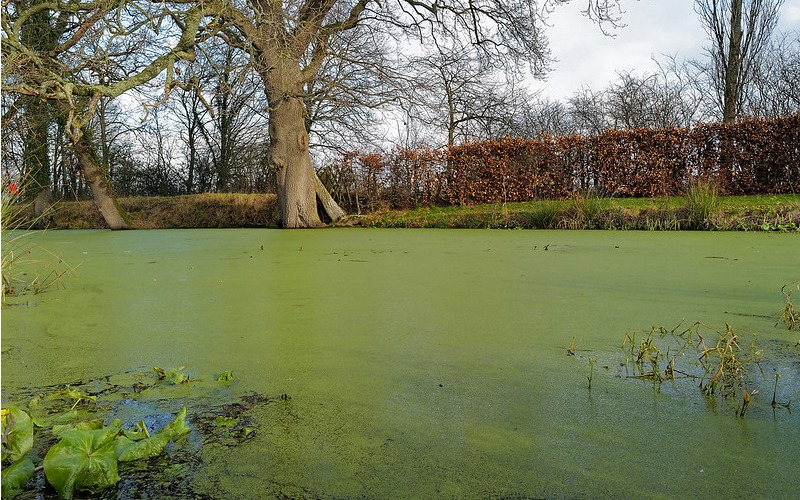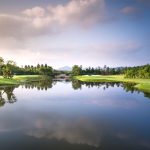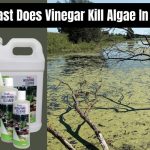A glistening pond nestled amidst your garden can be an oasis of tranquility, a picturesque paradise that offers relaxation and visual pleasure.
Yet, every pond owner’s nightmare often comes true when the water’s surface turns into a green, murky mess due to the relentless invasion of algae.
5 Best Pond Cleaner For Pond Algae And Muck
While pond algae are a natural part of the ecosystem, their unchecked growth can be detrimental to both the pond’s aesthetics and the well-being of its inhabitants, especially the fish.
In this comprehensive guide, we will explore how to get rid of pond algae without killing fish in the manual, natural, and mechanical processes. So without wasting more time let’s know everything about ponds and algae.
Understanding The Algae Invasion
Before diving into the solutions, it’s crucial to understand the types of pond algae and the factors contributing to their proliferation.
Types Of Pond Algae:
Let’s see which types of algae usually we can notice in our ponds. Almost 95% of ponds or lakes can be affected by these types of algae.
Green Algae (Planktonic Algae):
These microscopic, free-floating algae give your water a greenish tint. They are often the initial sign of an algae problem.
String Algae (Filamentous Algae):
String algae are notorious for forming dense mats or long, slimy strands that cling to surfaces in your pond.
Blue-Green Algae (Cyanobacteria):
Despite the name, these are not true algae but photosynthetic bacteria. They appear as a thick, greenish-blue scum on the water’s surface and can be harmful to fish and humans.
Factors Contributing To Algae Growth
Well, before knowing the main process you should also know about some factors that can contribute to algae growth. And here are these factors:
1. Excessive Nutrients:
Algae thrive on nutrients like nitrogen and phosphorus, which can come from fish waste, decaying plants, and overfeeding. Not just algae, excessive nutrients in ponds can contribute to water hyacinths also.
Although we already told you how to get rid of water hyacinths in a pond, this process does not apply to water algae.
2. Sunlight:
Algae require sunlight for photosynthesis. Ponds with excessive direct sunlight encourage algae growth.
3. Poor Water Circulation:
Stagnant water provides a breeding ground for algae. Adequate circulation helps distribute oxygen and nutrients evenly.
How To Get Rid Of Pond Algae Manually Without Harming Fishes
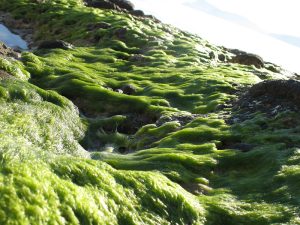
So here we are going to show you some manual steps to get rid of pond algae without harming fish. This process is a little bit time-consuming, but your fish won’t hurt by this process.
Step 1: Size and Depth Matter
Constructing a pond with the appropriate size and depth can significantly impact the algae problem. Deeper ponds have a larger water volume, diluting nutrients and making it challenging for algae to thrive.
Embrace Natural Shade:
Providing natural shade through aquatic plants, trees, or floating structures can reduce direct sunlight on the pond’s surface, curbing algae growth.
Aerate for Success:
Installing a pond aerator or fountain can increase water circulation and oxygen levels, preventing stagnant water conditions that promote algae growth.
Step 2: Balanced Fish Population
Balancing the fish population in a farm pond is necessary. Because too many fish are harmful to the pond ecosystem. At the same time, too much population is also harmful to fish. So let’s see how we can balance the fish population to avoid algae in the pond.
Mind Stocking Density:
Avoid overcrowding your pond with too many fish, as this leads to excess nutrients from their waste.
Choose Wisely:
Select fish species that are compatible with your algae control goals. Some fish, like koi and goldfish, consume algae, while others may contribute to nutrient buildup.
Step 3: Regular Water Quality Testing
Regular water-quality testing is another important thing that you must do if you are a fish farmer. Because by seeing the water quality you can take the necessary steps.
In addition, to get rid of algae in a large pond you must check your pond water quality regularly. Things you should do to taste water quality:
Stay Informed:
Invest in water quality testing kits to monitor crucial parameters like pH, ammonia, nitrite, nitrate, and phosphate levels. Maintaining these within acceptable ranges prevents nutrient imbalances.
Make Necessary Adjustments:
If nutrient levels are high, consider partial water changes to dilute excess nutrients. Be cautious to avoid sudden temperature and pH fluctuations that can stress your fish.
How To Get Rid Of Pond Algae Naturally Without Harming Fishes
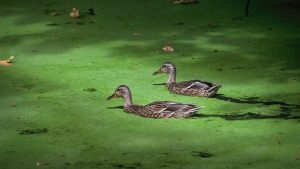
We have already told you the manual process to get rid of pond algae. And now in this part of this article, we will tell you the natural process of getting rid of pond algae step by step. Here are the steps that you should follow to remove pond algae naturally.
Step 1: Introduce Aquatic Plants
Submerged and floating aquatic plants like water lilies, water hyacinths, and hornwort compete with algae for nutrients and provide shading, reducing algae growth.
Step 2: Barley Straw Magic
Adding barley straw or barley straw extract to your pond can help inhibit algae growth. As the straw decomposes, it releases compounds that act as natural algaecides.
Step 3: Beneficial Bacteria Boost
Use pond products containing beneficial bacteria to break down excess nutrients and organic matter, limiting algae’s food source.
Step 4: Algae-Eating Fish Heroes
Consider introducing algae-eating fish like Chinese algae eaters, Siamese algae eaters, or plecos. Ensure their compatibility with your existing fish species.
How To Get Rid Of Pond Algae Mechanically Without Harming Fishes
We have already told you how to get rid of pond algae without killing fish manually and naturally. But here we are going to tell you the mechanical ways to remove algae from a large pond.
Manual Intervention:
Regularly remove string algae by gently pulling it from the pond using a long stick or net. Avoid chemical solutions for this task, as they can harm your fish.
Tools For The Job:
Specialized algae brush and vacuums can simplify the process of removing algae from pond surfaces and the substrate.
Tackling The Muck at the Bottom:
Addressing the muck at the bottom of your pond is essential for long-term algae control. To learn how to clean muck from the pond’s bottom, follow these steps:
1. Drain Your Pond: Begin by carefully draining your pond to a level that allows easy access to the muck without causing harm to your fish.
2. Use A Pond Vacuum: Invest in a pond vacuum, specifically designed for this purpose. Gently vacuum the muck from the pond’s bottom, taking care not to disturb the substrate too much.
3. Inspect And Maintain: As you vacuum, inspect the pond liner for damage or leaks. After cleaning, refill the pond with dechlorinated water and ensure that the water quality parameters are stable.
4. Add Beneficial Bacteria: After cleaning, introduce beneficial bacteria to help break down any remaining organic matter and prevent future muck buildup.
Harness UV Power:
Ultraviolet (UV) clarifiers use UV light to destroy algae cells, preventing them from reproducing. While this method doesn’t directly remove algae, it can effectively control its growth.
Chemical Algae Control (Exercise Caution)
Algaecides With Care:
Algaecides are chemical solutions designed to kill algae. Use them as a last resort and with extreme caution. Always follow the manufacturer’s instructions and ensure they are safe for fish.
Copper-Based Algaecides:
Some copper-based algaecides can effectively control algae, but monitor copper levels to prevent toxicity to fish.
Herbicides For Precision:
Herbicides can target specific types of algae, but their application should be left to professionals who understand their potential impact on fish.
Conclusion
Now you know how to get rid of pond algae without killing fish naturally, manually, and mechanically. Here we also briefly told you the process of cleaning muck from the pond’s bottom.
Maintaining a pristine pond while safeguarding the well-being of your fish requires a combination of proactive measures, regular maintenance, and a deep understanding of your pond’s unique ecosystem.
By implementing these strategies and regularly monitoring water quality, you can create a balanced environment that promotes healthy fish and keeps pond algae at bay.
Remember, it takes time to establish the ideal balance for your specific pond, so patience and dedication are key. With the right approach, you can transform your pond into a thriving, clear-water oasis that both you and your fish can enjoy for years to come.


